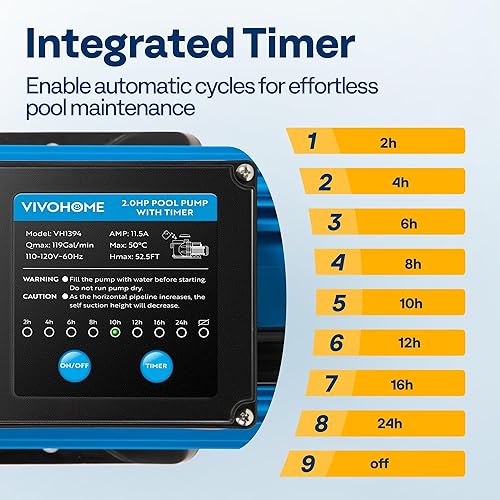Maintaining an efficient pool is no small feat, and at the heart of it lies a well-cared-for pump. Whether you’re setting up your first pool or you’re a pool-care veteran, these pump maintenance strategies are your go-to blueprint. From weekly inspections to detailed seasonal upkeep and solving common issues, we’ve got you covered.
Understanding Your Pool Pump
Your pool’s power player, the variable speed pump, operates via an electric motor to maintain optimal functionality. Key components include:
Strainer Basket
Pump Lid
Pump Motor
Strainer Basket
The strainer basket serves as the first line of defense, intercepting large debris before it reaches the impeller. For best results, ensure it’s cleared out weekly, mitigating potential blockages and pressure drops.
Pump Lid & O-Ring
Maintaining a secure pump lid seal is vital for effective suction. Routinely clean the lid and lubricate the O-ring with a dollop of silicone grease to preserve its integrity.
Impeller & Diffuser
The impeller and diffuser are crucial for moving water through your pool’s filtration system. If you notice a decrease in suction, promptly clean these components to remove any obstructive debris.
Pump Motor
The pump motor is essential for delivering consistent power. Ensure the intake area remains unobstructed for adequate airflow and frequently inspect electrical cords for signs of wear or damage.
Why Regular Pump Maintenance is Crucial
A neglected pool pump can lead to a range of issues, including reduced water flow, increased energy costs, accelerated wear on components, and potential pump failures or freeze damage. By consistently caring for your pump, you ensure a smooth operation and a more inviting pool.
Weekly Pool Pump Maintenance Routine
Spare a few minutes each week for these essential duties:
Empty the Pre-Filter Basket: Always turn off the pump before releasing the lid and clearing debris—this step is vital for maintaining peak performance.
Inspect the Lid & O-Ring: Clean both components and apply silicone grease to ward off air leaks.
Listen for Unusual Sounds: If you detect humming, grinding, or squealing, it could signal bearing problems or misalignment that need immediate attention.
Check Pressure Gauges: Any fluctuations might point to filter problems, affecting flow and causing undue strain on the system.
Seasonal Maintenance Overview
Adapt your pump care as the seasons change with these expert tips:
Spring: Conduct a comprehensive check—inspect hoses, baskets, and especially the O-ring. Clean the impeller if necessary.
Summer: Heightened pool activity makes regular maintenance essential, ensuring pressure and flow remain stable.
Fall: With potential debris increase, monitor baskets more frequently and perform a deep clean before the onset of colder weather.
Winter: In colder areas, ensure your pump is winterized by draining all water, thoroughly cleaning and drying parts, and storing them safely.
Troubleshooting Common Issues
Address typical pump challenges with these quick fixes:
Weak Suction or Low Flow: Clean baskets, examine the O-ring, and inspect hoses for leaks or kinks.
Pump Losing Prime: Refill the pump with water, clean the lid and seal, and meticulously check for air leaks.
Motor Overheating: Ensure the intake is clear of obstructions and that airflow remains unobstructed.
Strange Sounds: Humming might indicate a clogged impeller, while grinding could suggest faulty bearings. In such cases, consulting a professional is advisable before the problem escalates.
Final Thoughts
By staying diligent with weekly checks and seasonal maintenance and swiftly addressing issues, you’ll significantly enhance the lifespan of your pump, cut down on energy expenses, and relish the pleasure of crystal-clear pool water year-round. The takeaway? Consistent upkeep today wards off costly repairs tomorrow.
#PoolPumpMaintenance #PoolRepair #PoolCare #SwimmingPoolUpkeep #EnergyEfficientPools


